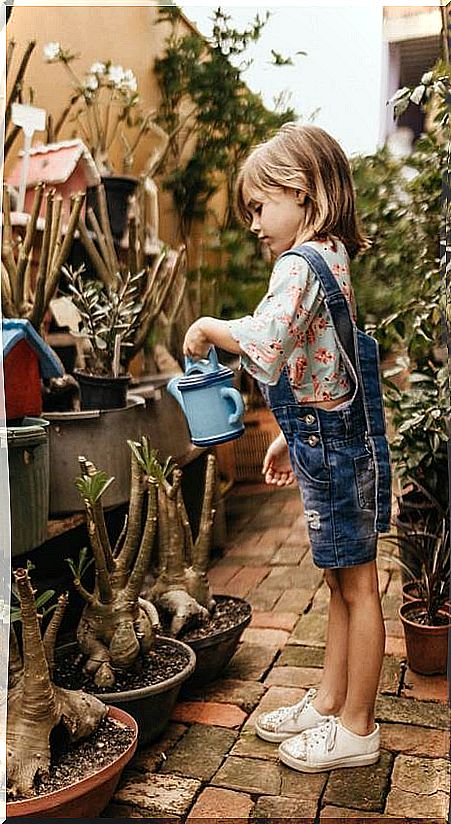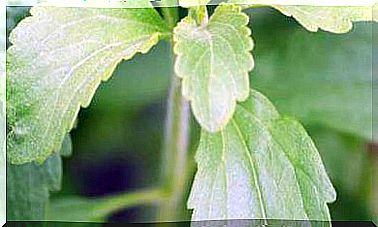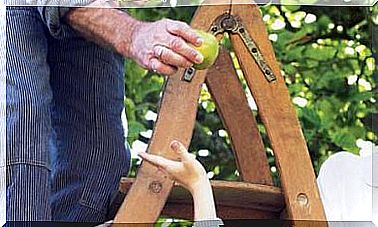How To Keep Children In Contact With Nature Without Leaving Home
For their physical and mental health, children need to be in contact with the natural elements, with the sky and the green of nature . We explain how.

Contact with nature is essential for the health and well-being of children for many reasons. That is why it is important that during these weeks of confinement we provide them with ways to contact plants and natural elements.
The benefits of nature for children
Indoors, the concentration of pollutants is higher than outdoors. That is why it is important to ventilate and breathe outdoors as long as possible.
Direct exposure of the skin to the sun is essential to synthesize vitamin D, a regulator of immunity, essential to face viruses, also the SARS-CoV-2 coronavirus that is causing the COVID-19 pandemic.
Furthermore, the human organism benefits in a general way from being surrounded by nature, which is its evolutionary environment, not concrete and artificial constructions. The simple fact of seeing the sky, plants or streams produces a beneficial effect on a hormonal and cognitive level.
Marc Berman, a psychologist at the University of Michigan, affirms that being surrounded by green, nature, even looking at it through the window, has an immediate positive effect on the brain.
Richard Mitchell of the University of Glasgow and Frank Popham of the University of Saint Andrews argue that people who live near green areas suffer less cardiovascular disease and have lower mortality for almost all reasons.
How to enjoy nature during confinement
The most effective way for children to reap the benefits of being in contact with nature during the weeks of confinement is to bring them closer to the plants.
We can ask them to take care of the plants, whether they are indoors, on the windowsill, the balcony, the terrace or, in the best case, in the garden.
It is an opportunity to lay the foundations for a lasting and positive relationship with nature. In addition, the kids – and the whole family – will have a lot of fun experimenting.
In addition, there are other ways of contacting nature:
- You can watch nature documentaries, not just series and movies.
- See magazines and books with beautiful landscapes from around the world.
- Hang photos on the walls of the natural spaces that you like the most.
- Go out to the window to recognize shapes in the clouds or discover the plants that can be seen on the street and on other balconies.
- On the internet you can find sounds of streams, birds, wind, whale songs, the murmur of the jungle … Every day you can try a different background sound environment for children’s games and daily activities.
At what age can children begin to grow in pots or gardens?
By dedicating themselves to the care of plants, children come into contact with many knowledge in a playful and natural way: they recognize the cycles of life, they experience the change of seasons more intensely and they acquire an idea about the origin of healthy food and its origin .
Being around plants relaxes children, who can counteract the sensory overload caused by consoles, televisions, computers and mobiles.
There is no age to start. The little ones can fondle the plants, play with the soil and water, or simply observe.
By age five or six, they can take on more responsibility and take care of all the care a plant needs in a pot or planter. The process can start from the cultivation of the seed to check its growth, which will reinforce your emotional bond with the plants.
The best way to get children’s relationships with plants is to let the children express a specific wish, come up with their project no matter how simple or complex it may be, and work with it.
Take the opportunity to introduce more knowledge
You can look at gardening books or internet pages. Learn about the different plants. About the earth and its inhabitants. About water needs and responsible irrigation. On the weather and the needs to protect certain plants …
A garden or a pot are ecosystems in themselves and you can get a lot of juice out of them! Do you have a microscope? With it you can see plants in a different way and marvel at everything they contain with their geometric and beautiful shapes.
How is a balcony safe for children?
For your children to be able to confidently explore the garden or balcony and immerse themselves in their world, it is essential that it is safe.
This means eliminating all potential sources of danger:
- Secure pots, rain barrels, or anything else so they don’t topple over.
- Don’t plant poisonous species. Check everything that grows because they can grow spontaneously.
- Avoid thorny plants.
- Don’t use pesticides.
- Check your garden or balcony regularly to identify wasp nests, bees …
What projects are suitable for gardening with children?
As soon as your child is self-sufficient to “do it himself,” he can start his first project. Gardening is possible throughout the year.
It is advisable to first create a list of possible gardening activities. The older and more experienced children are, the more independently they can implement projects.
Younger children need a lot of support, older children only a little. As the little ones cannot concentrate for too long, there are projects that can be carried out quickly, such as:
- Plant in pots
- Making Seed Bombs
- Harvest fruits and vegetables
Teach your child trivia and let their senses participate in the activity. Smells are very important, because they remain forever etched in the memory.
What plants are best suited for young gardeners?
Children intensely perceive their environment with all their senses. As a general rule, plant only robust and non-toxic species. Fragrant plants that attract insects that children can observe are also ideal.
Go for aromatic plants, flowers, fruits and vegetables without complications, easy to care for and fast growing. In this way, little gardeners can reap the literal fruits of their labor in a short time frame that is easier for them to understand. Here are some examples:
- Radishes
- Cherry tomatoes
- Green peas
- Mini cucumber
- Strawberries
- Raspberries
- Chive
- Melissa
- Parsley
- Edible flowers, such as nasturtiums and daisies
This activity can become a passion that will accompany children throughout their lives or arouse other added interests. You just have to pull the thread of what they show more interest for and accompany their curiosity.









